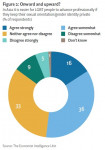China’s market for sport is growing rapidly but state controls are holding back potential
The report, sponsored by Mission Hills China, moves beyond the Olympics and examines the current status and outlook for four sports which represent big business in Western markets: basketball, football, golf and tennis.
Key findings include:
· Though the state still dominates sport, commercialisation is taking root. While China has liberalised and globalised many of its industries, sport has remained largely sheltered from commercialisation. Almost all of China’s top athletes are products of the state system. The official sport federations still control their respective sports, acting as de facto professional leagues in the sports examined in the study.
But commercialisation is taking hold, and, some would argue, gathering pace. In basketball, for example, several teams in the Chinese Basketball Association (CBA) league are now privately owned. The National Basketball Association (NBA) in the US, which has been active in China for the past 20 years, has set up a company called NBA China to promote the sport and its own business in the country. More athletes—recent examples include tennis players Zheng Jie and Li Na—are stepping away from their sport associations to become free agents, choosing their own coaches and keeping more of their winnings. With the state focused on elite athletes, major equipment suppliers from China’s Li Ning to international giants Nike and Adidas are trying to build the market by pouring money into training programmes for young players at the grassroots level.
· For China’s sport industry to reach its true potential, much more grassroots development is required. In most of the sports examined in this report, China has not yet created the virtuous circle found in more developed markets, where popular events expand the fan and participant base, which in turn attracts sponsors and creates more demand for merchandise and more events. With basketball this circle is beginning to form—the emergence of a Chinese star in the NBA, Yao Ming, has led to basketball becoming the common man’s sport in China, with courts found in the yards of many export factories. But this contrasts with golf, where industry players are fervently hoping that the sport’s potential inclusion in the Olympics will encourage the government to spend more on public facilities, thereby raising its profile and also putting what is currently China’s most expensive sport within reach of more potential players.
· Sport marketing is in its infancy. According to most industry players interviewed for this report, few of the sport federations in China are focusing on issues like branding and marketing, or are cognisant of the fact that they are competing with other forms of entertainment. Few Chinese athletes have agency representation, and consumers have yet to show the obsession with teams or individual players that their Western counterparts do—or at least to translate this into purchases of apparel or equipment emblazoned with team logos.
· Broadcasting presents a bottleneck. The dominance of the state-owned broadcaster, CCTV-5, of the national television market means that it can pay less for the rights to broadcast domestic sporting events than broadcasters in other countries. Indeed, there are already more events than it can reasonably cover. This means less money for sport, and for sport development. Overall, China accounts for just a fraction of the global sport-sponsorship market—US$1.5bn-2bn out of US$60bn, according to one estimate. Yet TV is widely perceived to be more important in reaching audiences in China than in other countries.
· Local heroes are needed—but so is the expertise to make them stars. Industry insiders point to the need for local stars to inspire more Chinese to take up their sport at the grassroots. While the rise of Yao Ming to star status with the NBA’s Houston Rockets is seen as a key factor in the popularity of basketball in China, it is notable that he only became a star with the help of Western marketing expertise. Indeed, while basketball fans mob Los Angeles Lakers’ star guard Kobe Bryant when he visits China and NBA games can draw television audiences in the hundreds of millions, China’s own basketball league does not have the same hold on local fans. A similar situation prevails in football, with the popularity of England’s Premier League far eclipsing that of the local equivalent. Industry observers blame this partly on a lower calibre of domestic play—but also on a lack of marketing savvy and management skills.
· Facilities construction is key. Although the Olympics raised awareness of sport in China, facilities remain scarce and expensive. A survey conducted by China’s General Administration of Sport in 2004 found that only 8% of sporting venues were in villages and towns, highlighting the concentration of resources in urban areas. China needs more public venues for sport in order to expand the fan base and grow the market. The Chinese government has taken note and is investing in more facilities, as are foreign companies such as AEG, a US-based sports and entertainment group. But this will take time.
· The complete privatisation of sport is not assured. Though commercialisation is taking hold, does this necessarily portend the end of state control? The timing and likelihood of a privatisation of China’s sport federations are subject to heated debate among sporting industry executives in the country. Though the onslaught of private-sector investment in sport would seem to indicate a tilt towards privatisation, the federations could continue to operate as state-owned enterprises but gradually become more market-oriented. This may not bode well: there are few examples of competitive state-owned enterprises in any industry. Indeed, many private-sector participants in the sport industry report difficult relations with, and little co-operation from, their respective federations.
웹사이트: http://www.eiu.com
연락처
Joanne McKenna
+44 (0)20 7576 8188
이메일 보내기
이 보도자료는 Economist Intelligence Unit가(이) 작성해 뉴스와이어 서비스를 통해 배포한 뉴스입니다.




